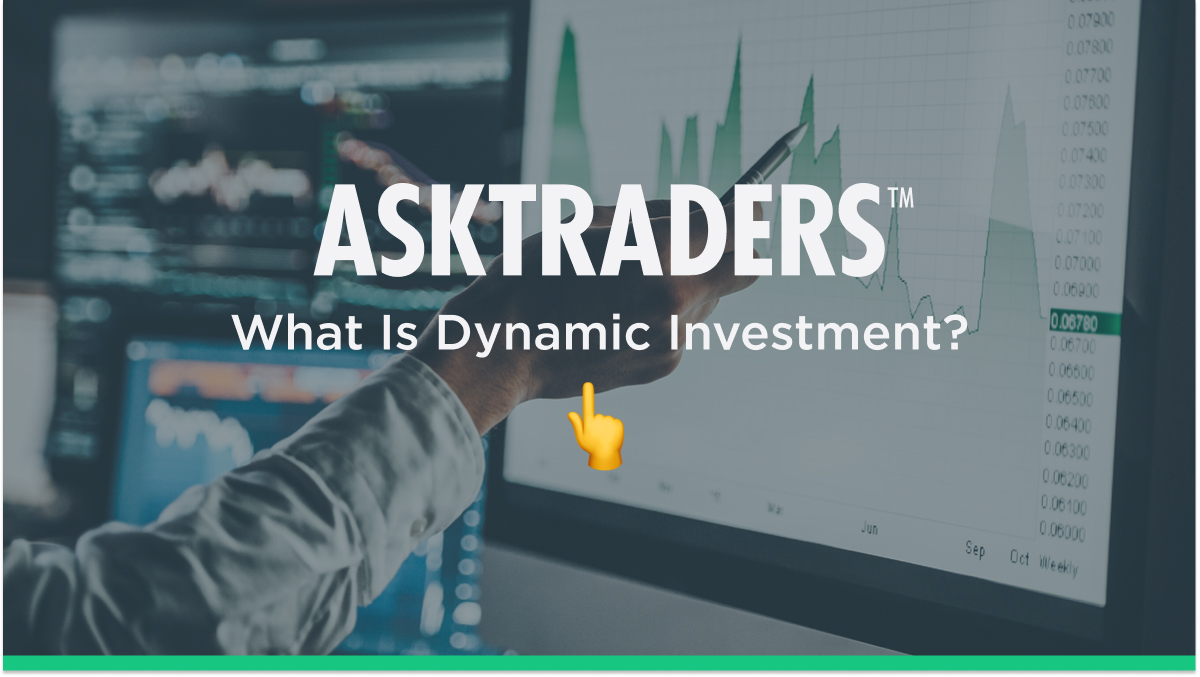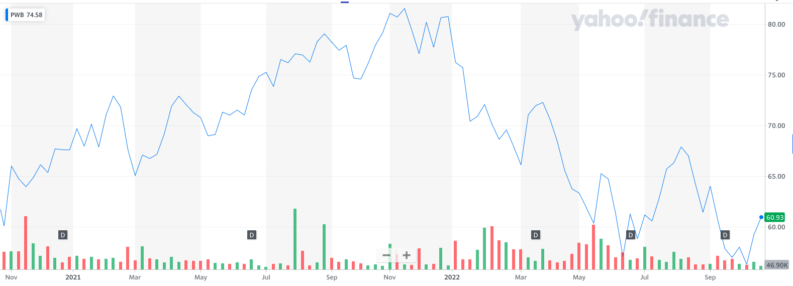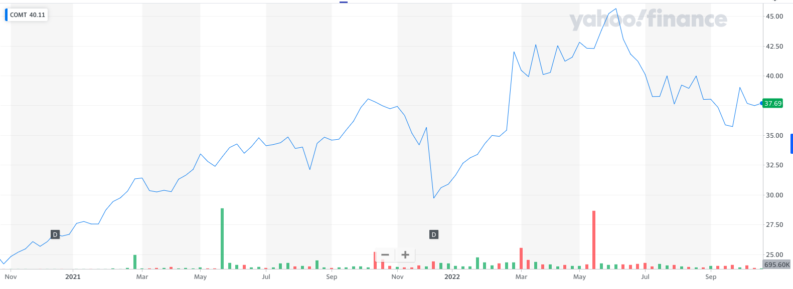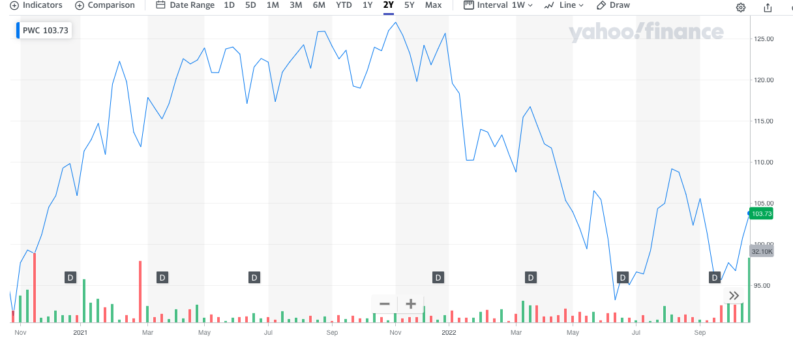For any trader – beginner, intermediate and expert alike – many will inevitably have encountered the term ‘Dynamic Investment’ in the course of their education and market analysis. But what does this terminology refer to? Paired down to its most basic definition, dynamic investment is a portfolio allocation methodology that reweights holdings according to the prominent trends in the stock market or the economy without overhauling the portfolio components.
YOUR CAPITAL IS AT RISK

Dynamic investing is an approach in which the portfolio manager attempts to run with the big underlying trends in the markets. These may include rising and falling interest rates, coordinated and legislated capital expenditure on big government budgets or bust outs in business sectors.
The investor or portfolio manager may increase or decrease the percentage of stocks in a particular sector according to perceived changes in the business landscape. The reason for this could be that the investor is concerned about rising interest rates – they may wish to raise bank stock holdings while lowering the weighting of bonds.
In this article, we’ve provided not only a definition of what dynamic investment is and what it means for your trading but also what the advantages, disadvantages and key examples of this methodology in progress are.
Table of contents
Portfolio Requirements For Dynamic Investing
The first and most important requirement when setting out on the dynamic investing trail is to ensure a diverse portfolio makeup. Defensive stocks are a strong component for when times are tough, yielding enough to outrun inflation, and some growth composition to catch the rising tides are recommended in this scenario.
The weighting here does not need to be perfectly balanced as that will continue to be adjusted in response to conditions. However, the core materials alloyed to the basket of securities need to be there in order to shave and add to each element on shifting tides.
Diversity
As the portfolio manager will be tweaking the holdings over time, it is important that there are levers available to operate in the largest possible array of environments.
This composition may contain debt and equity securities of regional, and internationally listed companies. Federal or municipal debt instruments, possibly even some warrants, a variety of currency exposures, multiple business sectors, and young and old enterprises.
The debt and equity balance, yield, business, and geographic diversity should, at the minimum, have touched all the cyclical trends of the past and are still relevant in some regard.
This process requires some nuance and will require a good deal of experience as well as a decent handle on the current state of the markets.
Analysis
The dynamic investor relies on astute analysis that is able to cut through the noise in order to firstly identify the trends and, secondly, execute the rebalancing so as to optimise the gains and minimise losses.
A decent understanding of current events matched with the ability to narrow focus on some of the more complex mathematics that will go into identifying the trend, then shifting the centre of gravity of the portfolio to compensate.
The trend analysis and the portfolio adjustments to be made, depending on the size and complexity of the portfolio, may require complex mathematics at times.
Execution
Once the starting portfolio has been aggregated, trends identified, and portfolio weights adjusted, it’s time to operate. The dynamic investment will require a lot more attention and work than a passive fund and will attract more fees as a result.
Execution fees need to be kept to a minimum as transactions are made to add or lower components on a regular basis. Record-keeping and performance reporting operations need to be streamlined in order to keep overall costs down, given the additional analytical work that will be billed to the portfolio.
As the portfolio manager will be adding and subtracting from the respective positions in the portfolio over the life of the portfolio, sometimes at short notice, it is important that the positions can be moved quickly. There are not too many irregular holdings that won’t find a bidder or provide an offer when you or the portfolio manager need one.
Advantages Of Dynamic Investing
Dynamic investing can bring several benefits to the investor. The portfolio holdings will be diverse, so there will always be a sector or class within the portfolio to help offset struggling assets.
The swing to the momentum grounded in tested analytics will provide an added boost to returns and, by the same token, limit losses from the struggling components of the portfolio.
The investor may want to take a more hands-on approach yet not have the time to do it themselves. If a stable basket of passive funds is not exactly what you require, then outsourcing the analytics and execution to a dynamic investment fund could be the way forward.
Disadvantages Of Dynamic Investing
The main disadvantage to the investor is that the dynamic investment fund fees will be higher than a passive investment fund. Dynamic investments do not involve a ‘buy-and-forget’ approach – there are constant analytics and operations to be funded in order to keep the basket righted.
There is also the risk that the analysis and management of the portfolio are subpar, causing the investor to lag the market too much to compensate for the higher fees. Timing in the momentum trade is critical and with many traders attempting to get a head start, it is increasingly difficult to beat the market.
Alternatives To Dynamic Investing
Dynamic investing might only suit those that have the utmost confidence in the portfolio manager or approach. However, for those that are newer to the investment space, it might be better to take a more hands-off approach.
A simple index tracker funds or market segment funds can be found for every listed geography and sector you could possibly think of. The explosion in exchange-traded funds (ETF) has meant that the power of low-cost fund management is now in the hands of retail investors.
ETFs that track the basket of benchmark indices are the easiest and most cost-effective way to acquire diverse portfolio assets that are near guaranteed to match the market performance.
If your goal is slowly and surely save for retirement while keeping one foot out in front of inflation, then a simple tracker ETF might be favourable to a more complex dynamic approach.
Dynamic Investment Funds – Examples
As an example of dynamic investment in action, we have selected the following funds to provide an illustration of this process in action:
- Invesco Dynamic Large Cap Growth ETF (NYSE:PWB)
- iShares GSCI Commodity Dynamic Roll Strategy ETF (NASDAQ:COMT)
- Invesco Dynamic Market ETF (NYSE:PWC)
Invesco Dynamic Large Cap Growth ETF (NYSE:PWB)
This fund is listed on the NYSE, is liquid, easy to add to your portfolio, comes with a modest total expense ratio of 0.55%, and facilitates active management in the biggest and most liquid US stocks.
With a quarterly rebalancing, the portfolio manager will only apply force to the rudder at pre-determined times under a set quantitative strategy. For the uninitiated, this will provide assurance to the investor that they aren’t trading too much and focussing on the execution.

In a difficult year, this ETF is down 25% and all stocks have fallen in unison. The portfolio effect of diversity under a dynamic investing approach designed to limit losses has been less effective, losing to the S&P500 index by 5% on the year.
iShares GSCI Commodity Dynamic Roll Strategy (NASDAQ:COMT)
This portfolio applies a rule-based strategy to a broad mix of commodity futures. In an otherwise difficult market for the retail investor to enter, COMT facilitates an entry point in commodity trading exposure combined with a dynamic investing adjustment to catch the trends.
Traders will notice an expense ratio of 0.48% associated with this fund, coupled with a year-to-date daily return of 21.66%.

Currently trading (at the time of writing) at $37.55 per share (+0.37%) at close, COMT has ridden the 2022 commodity boom and is up 22% on the year.
Invesco Dynamic Market ETF (NYSE:PWC)
PWC is geared to the entire market, investing 90% of total assets in the listed stocks that make up the US market. This fund is rebalanced quarterly. Given the large number of stocks covered, the total expense ratio is slightly higher than PWB at 0.60%.
PWC’s diversity and contribution from smaller growth stocks have allowed this ETF to just beat out the S&P500 index by 3% year-to-date, currently down by 17% on the year.

The ebbs and flows of the Invesco Dynamic Market ETF index closely correlate to the wider market, with the view to marginally outperform benchmarks after fees with the quarterly rebalancing.
If you are willing to forgo some additional fees for security and broad market coverage, then PWC might be the investment decision for you.
Final Thoughts
If you are looking to add dynamic investment funds to your portfolio, there is an abundance of resources out there to assist you on your journey.
Asktraders has a wealth of quantitative and qualitative tools at your disposal. Indeed, it is recommended that all traders should conduct due diligence before making any investment.
It is certainly worthwhile outlining what you want to achieve – pairing these aims with your current saving and investment goals. If you wish to take a chance on a market or sector, then a more focused dynamic fund like PWB or COMT may be worth considering.
As you get more experienced, you can then implement some of the techniques and strategies on your own with the help of Asktraders and execution via our list of recommended brokers.
People Who Read This Also Read













